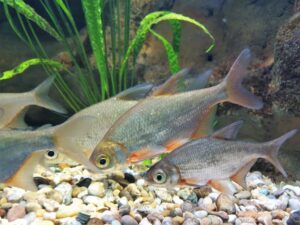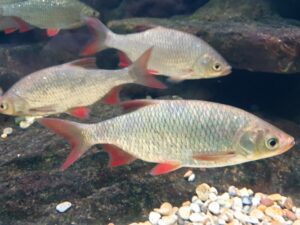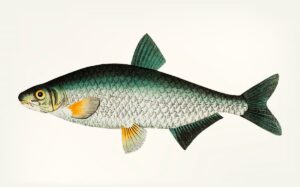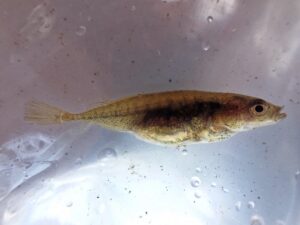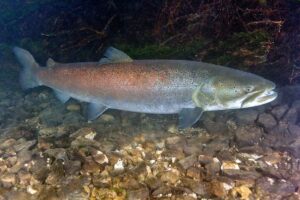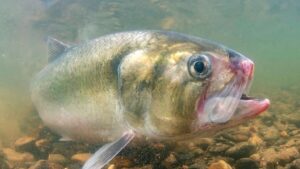Bottom feeder: Spined Loach (Cobitis taenia)
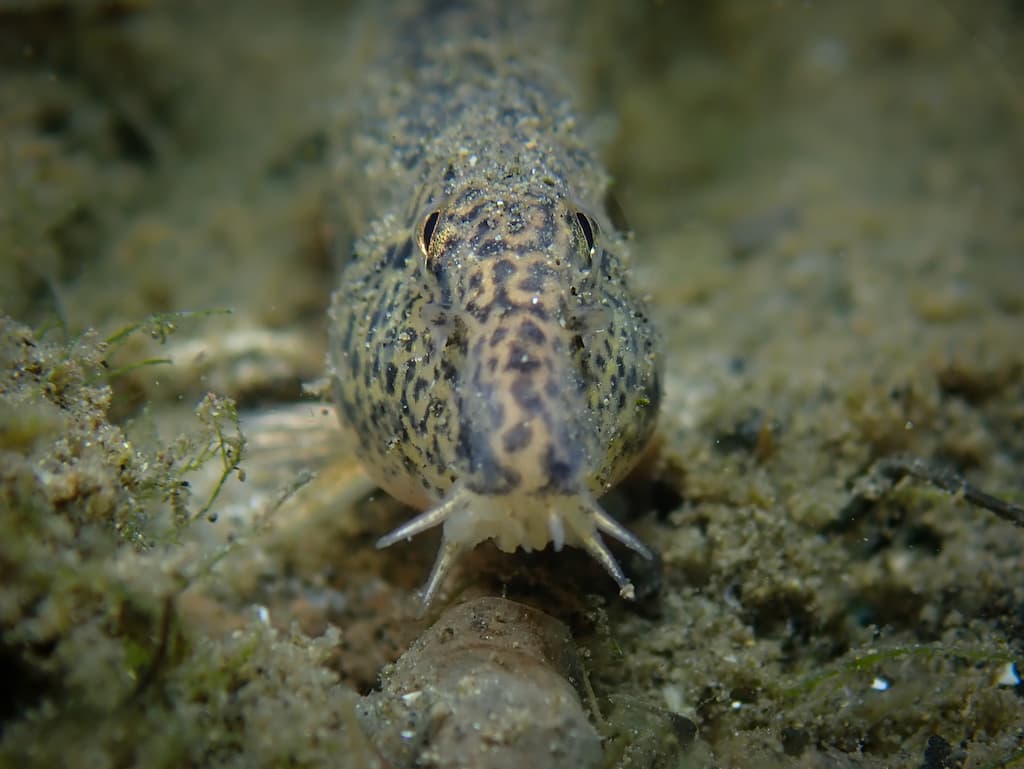
The Spined Loach (Cobitis taenia) is a small freshwater fish found in rivers and streams across Europe.
The Spined Loach is typically caught accidentally and is a protected species in some European countries, such as France and Belgium.
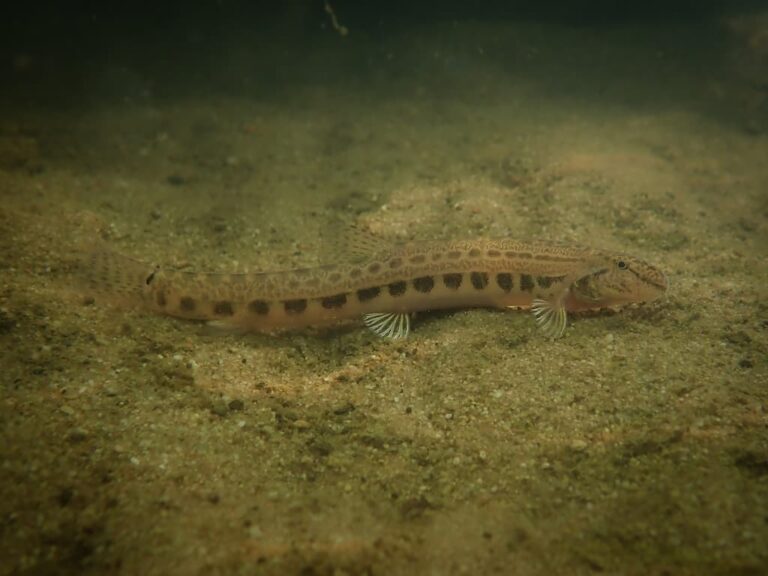
What is a Spined Loach (Cobitis taenia)?
The Spined Loach (Cobitis taenia) is a European freshwater fish. It is widespread in rivers and streams and is known for its spirited nature and delicate flesh when caught.
Description of a Fish: the Spined Loach
Identification
The Spined Loach (Cobitis taenia) is a small fish, generally measuring between 10 and 20 centimetres (about 3.9 to 7.9 inches) in length. It has a flattened head and a cylindrical, elongated body. Its eyes are small, with a spine under each eye, and it has a relatively small mouth with six barbels on the upper lip. Its gills are visible on the sides.
The Spined Loach’s fins are short and rounded, often reddish or orange. The body is grey-green on the back, with lighter sides and a whitish belly.
| Class |
| Actinopterygii |
| Order |
| Cypriniformes |
| Family |
| Cobitidae |
| Genus |
| Cobitis |
| Species |
| C. taenia |
| Binomial Name |
| Cobitis taenia (Linnaeus, 1758) |
Size and Weight
The average size of the Spined Loach is about 15 centimetres (approx. 5.9 inches), but it can reach up to 30 centimetres (approx. 11.8 inches) depending on the habitat and water quality. The average weight is around 50 grams (approx. 1.8 ounces). The world record for a Spined Loach is 110 grams (approx. 3.9 ounces), caught in Italy in 2011.
Longevity
The Spined Loach has an average lifespan of 5 to 6 years, although it can live up to 10 years under optimal conditions. It is a highly prolific fish and often reproduces throughout its life.
Habitat and Lifestyle
Habitat
The Spined Loach (Cobitis taenia) is a freshwater fish species primarily found in Europe. It inhabits a wide range of habitats, including rivers, streams, canals, and lakes, from sea level to an altitude of about 1500 meters (approximately 4921 feet). It prefers flowing, calm waters with sandy or gravelly bottoms and dense aquatic vegetation.
Diet
The Spined Loach is omnivorous and feeds on various foods, such as small crustaceans, molluscs, insects, larvae, and algae. It is often seen scouring the bottoms of water bodies for food.
The spined loach feeds at night and often hides under stones and rocks during the day to protect itself from predators. It can also take refuge in shaded areas or under aquatic plants. The Spined Loach is skilled at hiding, using its slender and elongated body to slip into the tiniest crevices.
Reproduction
The Spined Loach typically reproduces in spring and summer as water temperatures rise. Males build sand or gravel nests to attract females and deposit their sperm in the nests. Females then lay their eggs in the nests, which the males fertilise. The eggs hatch after a few weeks, and the young fish start their life on the bottom, searching for food and avoiding predators. Due to habitat destruction and water pollution, the Spined Loach is threatened in some regions.
Interest of the Spined Loach
Although the Spined Loach holds no direct interest for anglers, it is often caught accidentally while fishing for other fish species.
However, it plays an important ecological role by contributing to the balance of aquatic ecosystems, feeding on harmful organisms, and serving as prey for predators. The Spined Loach can also indicate water quality, as it is susceptible to pollution and disturbances to its natural habitat.
Fishing Techniques for the Spined Loach
The Spined Loach is typically caught accidentally when fishing for other fish species. It can be captured using bottom fishing techniques, such as worm, maggot, or corn fishing.
Fishing for the Spined Loach can be an exciting challenge for anglers, as it is very adept at hiding and can be difficult to catch.
Common Names for the Spined Loach (Cobitis taenia)
Most popular common names for the Spined Loach are Loche de Rivière (french), Steinbeißer (german), Cobite fluviale (italian), Colmilleja (spanish), Kleine modderkruiper (dutch) and Kózka (polish).
Conservation Status of the Spined Loach (Cobitis taenia)
The Spined Loach is classified as “LC” (Least Concern) on the IUCN Red List, corresponding to a species with a low risk of extinction.

